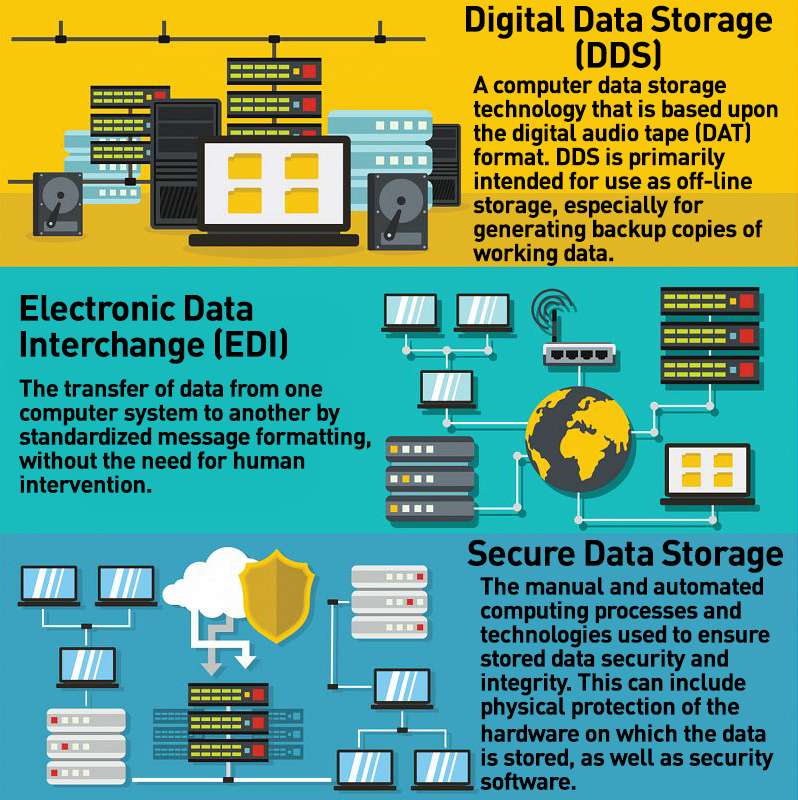Vital Cyber Security Practices for Effective Data Destruction Approaches
Vital Cyber Security Practices for Effective Data Destruction Approaches
Blog Article
The Relevance of Effective Information Devastation Practices in Shielding Sensitive Info and Ensuring Computer System Protection
In an era where information breaches are increasingly usual, the significance of effective information destruction methods can not be overemphasized. Carrying out robust information damage methods not only alleviates these risks yet also lines up with legal compliance demands, ensuring that organizations promote their track record and foster customer trust.
Comprehending Information Devastation
Understanding data damage is essential in today's digital landscape, where delicate information can quickly be endangered. Reliable data damage includes not just guaranteeing but removing documents that information is irretrievable through extensive techniques. This procedure is vital for companies that handle private client details, copyright, or internal documents, as any breach can cause serious economic and reputational consequences.
Data devastation encompasses various techniques, including shredding physical media, degaussing magnetic storage tools, and employing software-based solutions that overwrite data multiple times. Each method serves a certain function and needs to straighten with the level of sensitivity of the details being thrown away. Physical destruction is often favored for difficult drives consisting of extremely confidential information, while software application methods might be adequate for much less sensitive details.
In addition, adhering to industry requirements and guidelines, such as the General Data Protection Law (GDPR) or the Medical Insurance Mobility and Accountability Act (HIPAA), is essential for conformity and to reduce lawful threats. Organizations should develop a durable data devastation policy, train workers on finest techniques, and consistently audit their procedures to make sure that all sensitive info is disposed of securely and successfully.
Threats of Inadequate Practices
Inadequate information devastation practices subject companies to considerable dangers that can have far-reaching repercussions. When delicate information is not effectively dealt with, it continues to be susceptible to unauthorized access, which can bring about data breaches and identification burglary. Such incidents not only jeopardize the safety and security of individuals yet also stain the organization's track record, causing a loss of consumer trust and potential financial consequences.
In addition, regulative compliance is significantly stringent in many industries. Failure to comply with information damage guidelines can lead to significant fines and lawsuits versus companies. These charges can stress funds and draw away attention from core business procedures.
Furthermore, the misuse of residual information can cause intellectual home burglary or corporate reconnaissance, endangering competitive benefits (data destruction). The influence of poor information damage expands past immediate economic losses; it can additionally result in long-lasting damage to brand integrity and market position

Organizations need to recognize that information protection is not only regarding preventing violations; it additionally includes the liable administration of information throughout its lifecycle. Overlooking reliable data devastation protocols can have tragic ramifications, underscoring the necessity for robust measures to minimize these risks.
Finest Practices for Information Destruction
Carrying out effective information destruction techniques is vital for protecting sensitive info and maintaining conformity with regulatory requirements. Organizations needs to embrace a multi-faceted strategy to guarantee that information is irretrievable, therefore avoiding unapproved gain access to and prospective violations.
First, data ought to be classified based upon level of sensitivity, allowing organizations to apply appropriate damage approaches tailored to the level of threat. For digital data, using software-based data-wiping devices that adhere to these details sector requirements can properly overwrite existing information. Physical damage approaches, such as shredding or degaussing, are vital for tools that save sensitive information, making certain complete removal.
Developing a clear data retention policy is crucial, describing for how long different sorts of information should be maintained prior to devastation. Routine audits of data storage systems are also needed to determine unneeded or outdated information requiring removal.
Furthermore, training workers on the importance of information damage and the specific methods to adhere to fosters a society of safety within the organization. Keeping paperwork of information destruction processes provides liability and supports compliance with outside regulations and inner policies. By sticking to these best techniques, organizations can dramatically alleviate the threats connected with information exposure.
Legal and Conformity Factors To Consider

Failure to conform with these policies can result in serious charges, including significant penalties and reputational damages. Organizations has to execute a robust information destruction policy that aligns with these legal structures and gives clear standards on the correct approaches of information disposal, whether physical shredding or electronic cleaning.
Additionally, keeping paperwork of data destruction activities is important for demonstrating conformity throughout audits or assessments. By focusing on legal and compliance factors to consider, companies can boost their data safety and security pose and foster trust fund with advice stakeholders and clients, ultimately adding to an extra safe data management setting.
Advantages of Effective Data Devastation
Efficient data damage practices expand beyond mere conformity; they use substantial advantages to organizations that prioritize them. By ensuring that delicate info is irretrievably ruined, companies minimize the danger of information violations and the potential economic consequences associated with them. This positive technique not only safeguards versus unauthorized access however also improves the total dependability of the organization in the eyes of customers and stakeholders.
Carrying out robust information destruction approaches, her explanation such as physical destruction of storage tools or advanced information cleaning techniques, adds to the conditioning of a company's cybersecurity position. data destruction. It lowers the probability of intellectual building theft and secures exclusive info, therefore maintaining a competitive side in the market

Verdict
Finally, effective data devastation practices are essential for securing sensitive details and enhancing total computer system safety. By executing detailed methods such as degaussing, software program, and shredding overwriting, organizations can minimize the risks related to unapproved accessibility and data breaches. Adherence to governing criteria, including GDPR and HIPAA, further reinforces compliance and shields versus legal repercussions. Eventually, a dedication to durable information damage methods cultivates a culture of obligation, consequently reinforcing a company's cybersecurity stance and maintaining client trust.

Report this page